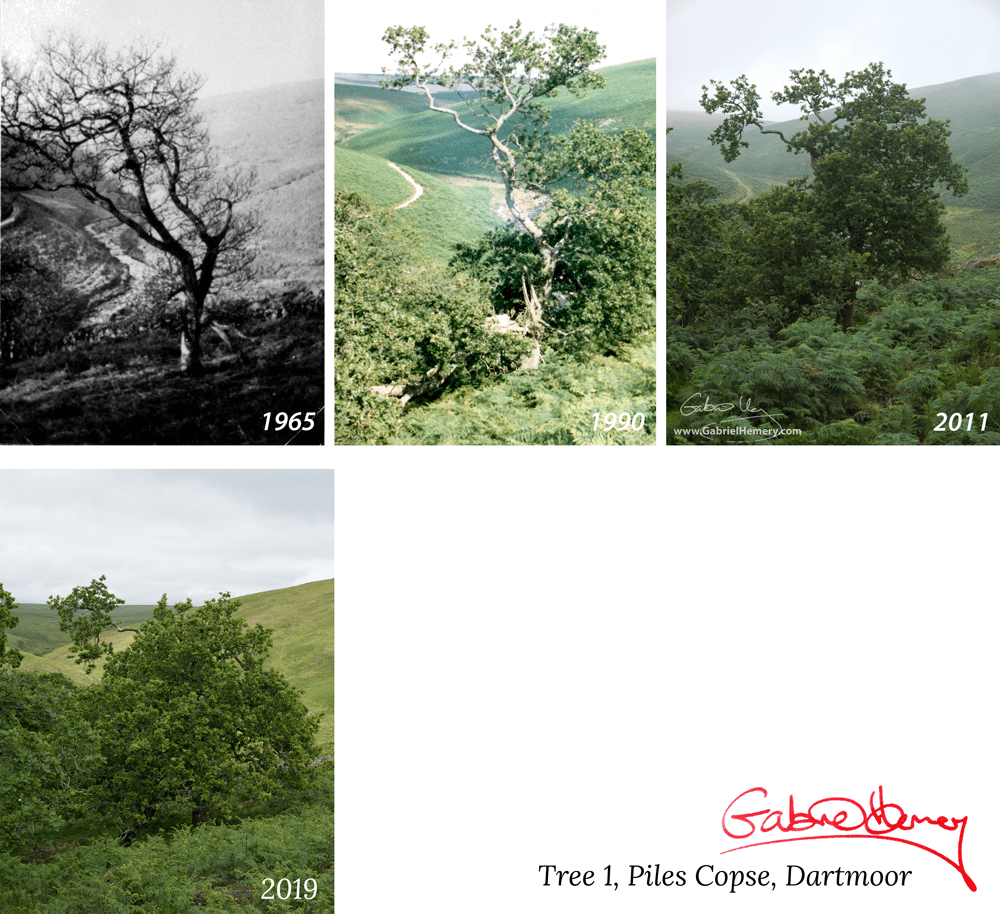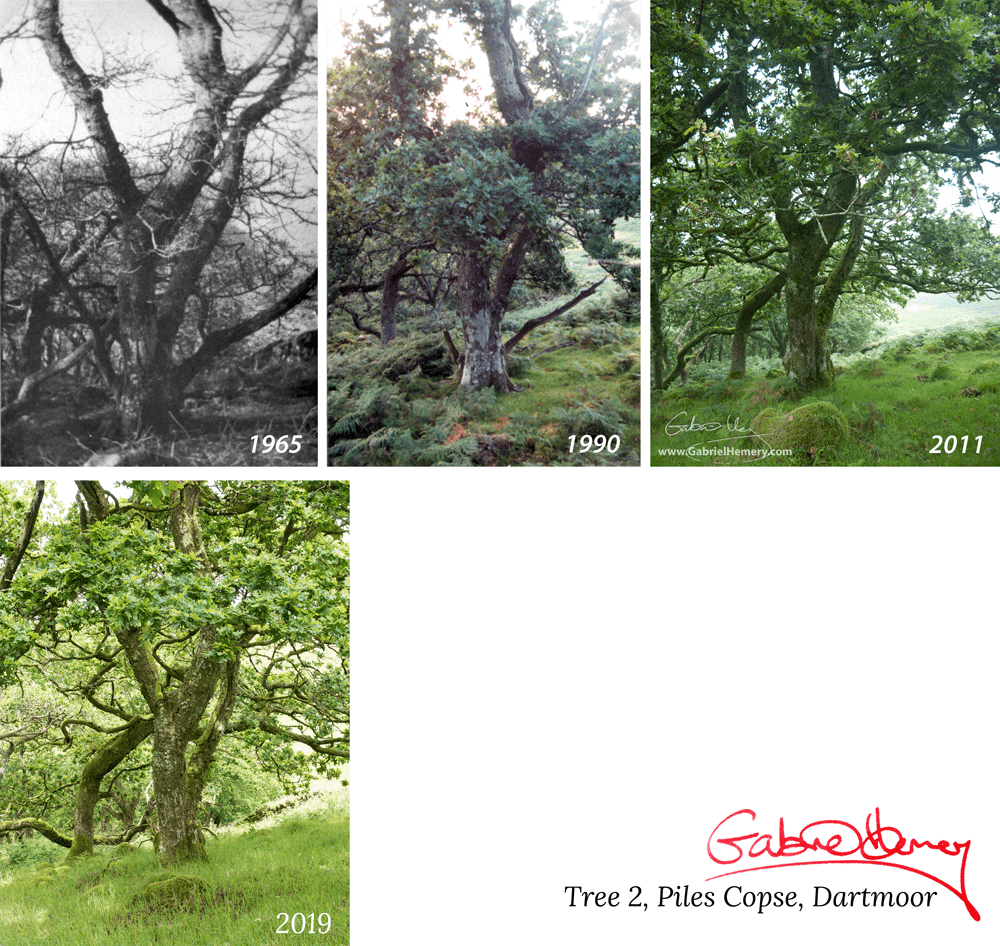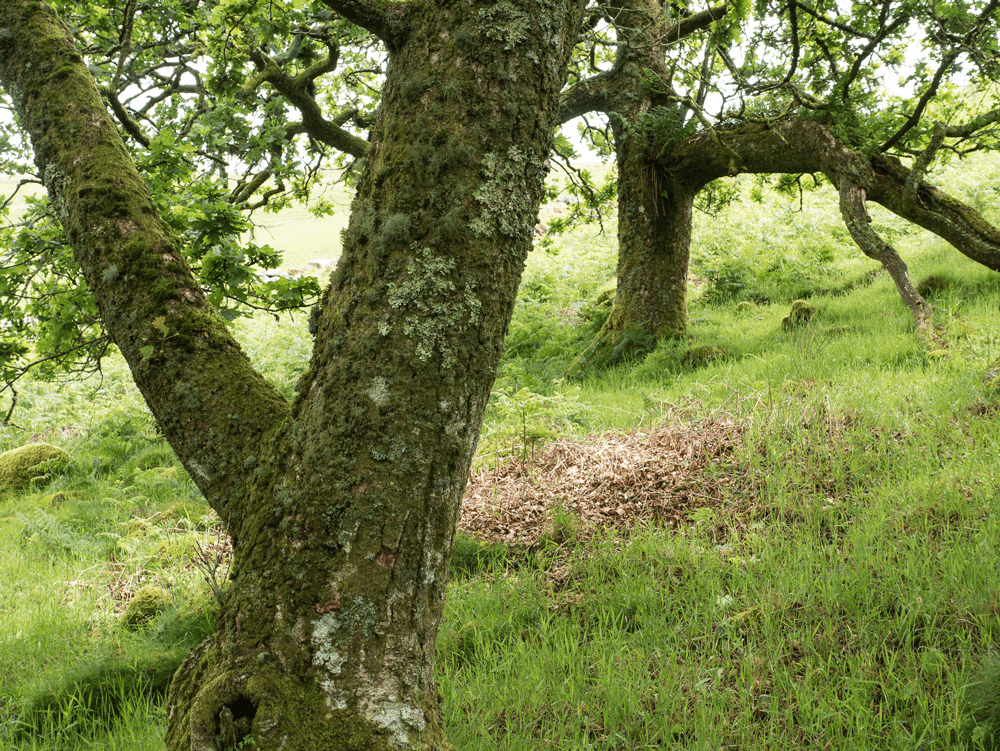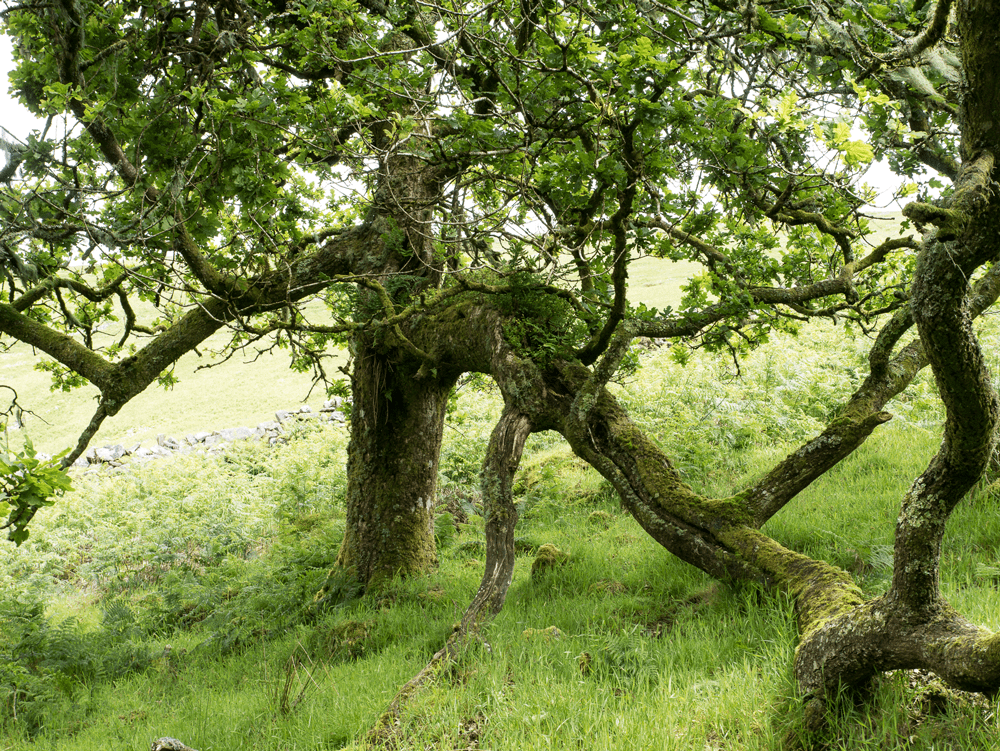I am running a long-term photomonitoring project of two trees at Piles Copse on Dartmoor, first noted in a publication in 1922. Their location is in the north-east corner of the copse near a wall that runs up the hill.
Tree 1
Tree 1 – “An isolated tree, at the north-east corner of the wood … its girth is 49 in., and its height 28 ft., its trunk is somewhat over 7 ft. to the first branch.” Christy & Worth 1922.
N 050° 26’40” W 003° 54’32” (Ordnance Survey SX645622) altitude 323m.
The tree was first described in 1922 and then identified and photographed by a local naturalist, Molly Spooner, in 1965. I found the tree again for my study in 1990. It had lost half of its crown. Finding it again in 2011, I was pleased to see that the canopy was very full and the leaves healthy. Even the branch that had split sometime before my last visit was alive and thriving, although horizontal and resting on the ground. In my visit of 2019, the tree appears to have grown more, filling out its crown close to the ground. Its distinctive tortured branch in front of the skyline is a useful distinguishing feature.

Tree 2
Tree 2 – “Hard by is another type, the girth 67 in., but the trunk rises little more than a foot from the ground and then branches into four, the largest branch having a girth of 36 in. The height is 29 ft. and the radial spread 20 ft. 4in.” Christy & Worth 1922.
The tree had already lost two of its four low branches in 1990 although they were still attached as deadwood. In 2011, both had disappeared completely and overall, the canopy was higher. Among other trees in the copse today it does not look extraordinary, and would unlikely to have been noticed by Christy & Worth in 1922 had it been in its present state. In 2019, there was little noticeable difference from 2011, and the crown appeared very healthy.



 This work is licensed under a Creative Commons Attribution- NonCommercial- NoDerivs 3.0 United States License.
This work is licensed under a Creative Commons Attribution- NonCommercial- NoDerivs 3.0 United States License.

Lovely photos of this wild part of Dartmoor. I trust the three ancient woodlands on Dartmoor are safe from climate change and diseases for generations to come. P H-L